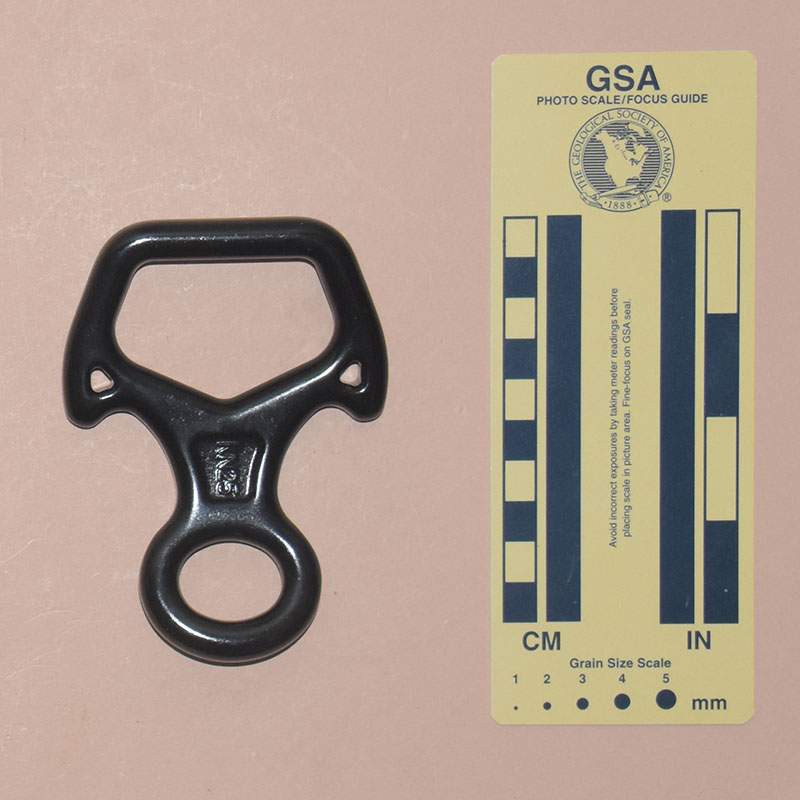Technical Details
I acquired my Z&W on eBay from motorsmarket_sfc in 2021.
The Z&W is forged from aluminum alloy and then soft
anodized. Mine is 109 mm. tall, 80 mm. wide, and 19 mm.
thick. The Ace has a distinct bend that accounts for the increased
thickness; if flat, it would be only 10.9 mm. thick. The
rope hole is 35 mm. high and 53 mm. wide. The top center
thickness is 11 mm. The shaft length and width are 35 mm.
and 25 mm., respectively. The eye measures 20 mm. by
25 mm. The ears are 11.3 mm. long. My Ace eight
weighs 89 g.
The convex side of the shaft has "Z&W" in printed characters, and the concave side has "kN25" in raised forged characters.
This is one of the following family of nearly identical "mini"-size figure eights with ears:
|
|
|
|
|
| Image |
Eight |
 |
Z&W |
| |
|
|
Each of these eights is 109±1 mm. tall and 80±1 mm. wide. Their weights fall in the 89±5 g. range. Although similar, these eights are not identical, and close inspection will reveal some minor differences in their shapes. None of these affect their performance to any noticeable degree.
These eights are smaller and much lighter than most figure eights with ears. While the advantages are manifest, there are two practical disadvantages:
- These eights give too much friction on stiff, muddy
rope. This will not affect climbers using clean, limp climbing ropes, but for cavers using stiff ropes such as PMI pit rope, this is a concern. I've found times that I could not descend without hand-forcing the rope through my eight, and I'm nearly 90 kg. (198 lb.), not exactly light (even for being 1.93 m. tall).
- Their small size does not not work well
with doubled rope. While climbers may be able to work around this, especially if they are using thinner ropes, cavers using stiff pit rope will find it difficult to rig a double-rope rappel. If they succeed, descent may be impossible.
The holes in the ears provide a place to tie a keeper cord, if you believe in such things. To me, the nuisance of keeping the keeper away from the main rope outweighs their value.
The rope hole is shorter than normal, so these eights may provide too much friction on stiff or muddy ropes. If these were flat (like the similar Kailas Multi 8), they would create more friction than most eights. The bend allows them to be rigged two ways with differing amounts of friction, one with less friction than the Kailas and one with more.
Other small eights have similar bends. Examples are the Chouinard
Version B, Faders Versions A and B, Frendo
Version B, and the Trango Penta. The significant difference is that this eight and its equivalents also have ears. Better yet, the ears are placed low where they can function effectively without increasing the size of the eight. The idea behind ears is that they reduce the chance of an eight girth-hitching. They are not strictly needed, as girth hitching is neither likely nor more than a minor nuisance to a competent user. For eared eights, I like this design enough to give each example a star.
For far more content, use a larger monitor and a full-width window.
Hundreds of cell phone users complained and asked me to for a simpler, mobile friendly site. In particular, they wanted me to limit each page to a small number of pictures and minimize my use of text. This new site provides what they asked for.

